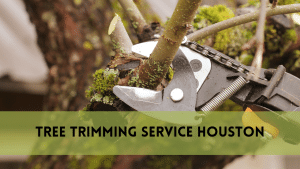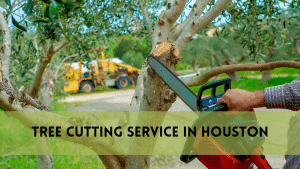Planting cedar trees is an excellent way to achieve your dream of creating a quiet and regal landscape around your home. Cedar trees are noted for their resilience and adaptability, as well as their enduring beauty. Our comprehensive guide will walk you through the process to plant cedar trees step by step, ensuring your success in caring for these magnificent plants.
Selecting the Proper Variety of Cedar Trees For Planting
The first step in planting a cedar tree is to select the right kind for your location. Consider the available area, soil type, and climate. Cedar trees come in a variety of varieties, including White, Western, and Eastern red cedars. Each has unique characteristics, so choose the one that works best in your specific situation.
Choosing the Perfect Site for Planting Cedar Tree
Cedar trees prefer sunlight and well-drained soil. Make certain that the place you select receives at least six hours of direct sunshine every day. Cedar trees do not like wet soil, therefore avoid areas that flood regularly. The best growth medium for cedar is enough sunshine paired with well-drained soil.
Getting Ready to Plant in the Soil
To prepare the soil, remove any grass or weeds from the chosen spot. Break up the soil to improve drainage and aeration. Testing the pH of the soil and making any required amendments is a good idea because cedar trees like slightly acidic to neutral soil. A pH of 6.0 to 7.0 is typically good for cedar trees.
Steps to Plant Cedar Trees
It is now time to dig the planting hole after selecting the ideal spot and preparing the soil. The hole should not go any deeper than twice the width of the root ball of the tree.
Making sure the roots stay in place, carefully take the tree out of its container. Ensure that the tree is positioned at the same depth as it was in the container by placing it in the center of the hole.
Watering and Backfilling
Backfill the hole with the dirt you previously removed once the cedar tree is planted. Gently press down on the earth to eliminate any air pockets. Give the tree plenty of water after planting. Cedar trees value regular moisture, especially during their initial establishment period. Make sure the soil is constantly damp but not soggy.
Mulching to Preserve Moisture
Mulch is applied around the base of the tree to assist control temperature, weed growth, and soil moisture retention. Use a 2 to 3-inch layer of organic mulch, such as bark or wood chips. In order to avoid rot, make sure the mulch stays away from the trunk.
Trimming and Forming
Light pruning can assist maintain the natural and attractive shape of cedar trees and remove any damaged or dead branches. Before new growth appears, prune in late winter or early spring. Since cedar trees are naturally resistant to diseases and pests, exercise caution when pruning them.
Fertilising Trees of Cedar
In general, cedar trees thrive without extensive fertilization. Nonetheless, a nutritional boost can be obtained by applying a slow-release, balanced fertilizer early in the spring. Since cedar trees are sensitive to high nutrient levels, heed the recommended application rates listed on the fertilizer box and refrain from overusing.
Defending Cedar Trees Against Diseases and Insects
Although cedar trees are often hardy, it’s important to keep an eye out for potential pests and illnesses. Watch out for problems like spider mites, cedar-apple rot, and bagworms.
Prompt intervention and routine inspections can stop these issues from getting worse.
Winterization of Cedar Trees
Although cedar trees are well-suited to winter conditions, certain varieties may benefit from a mulch layer around the base to protect the roots from excessive cold.
Enough irrigation in late October, before the ground freezes, ensures that the tree is hydrated throughout the winter.
Savoring the Results of Your Work
As it develops and matures, your cedar tree will become a gorgeous focal point in your area. The aromatic cedar adds a natural touch to your surroundings, while the evergreen foliage provides year-round appeal. Take a moment to appreciate your positive impact on your environment and the beauty you have produced.
FAQs
How can I select the best variety of cedar tree for my area?
Take into account your soil type, climate, and available area. Common kinds include Eastern Red Cedar, Western Red Cedar, and White Cedar, each with unique qualities appropriate for various environments.
Where is the best place to put cedar trees?
A sunny spot with well-drained soil is ideal. Every day, cedar trees require at least six hours of direct sunlight to flourish. Cedar trees like well-drained soil, so stay away from waterlogged regions.
How should the soil be ready for cedar tree planting?
Aerate the planting area by removing grass and weeds, testing the pH of the soil, and breaking up the soil. At a pH range of 6.0 to 7.0, cedar trees prefer slightly acidic soil over neutral soil.
Do cedar trees need specific maintenance once they are planted?
Absolutely, give the tree plenty of water right after planting, and make sure it stays consistently moist for the first several years of its life. Spread a layer of organic mulch around the base to control soil temperature and hold in moisture.
What is the optimal time and amount of pruning for cedar trees?
Before new growth starts, prune cedar trees in late winter or early spring.
Light pruning gets rid of unhealthy or dead branches while preserving their natural shape. Because cedar trees are naturally resistant to diseases and pests, avoid over pruning them.
Conclusion
To sum up, plant cedar trees is a worthwhile project that raises the appeal and market value of your home. You will be rewarded with a hardy and eye-catching addition to your landscape if you properly choose the appropriate cedar kind, create ideal growing conditions, and provide regular care. You’ll be well on your way to planting and caring for cedar trees for many years to come if you follow this thorough advice. Happy gardening!





